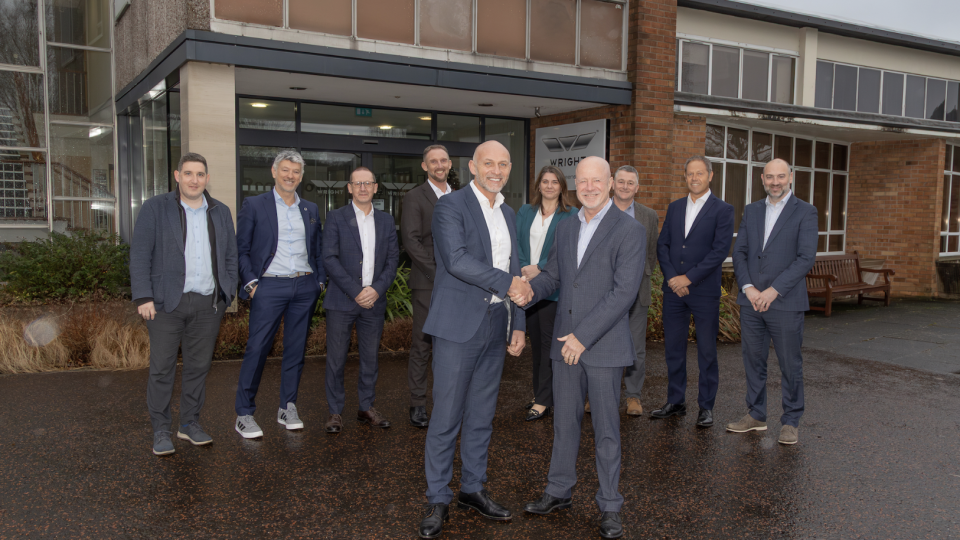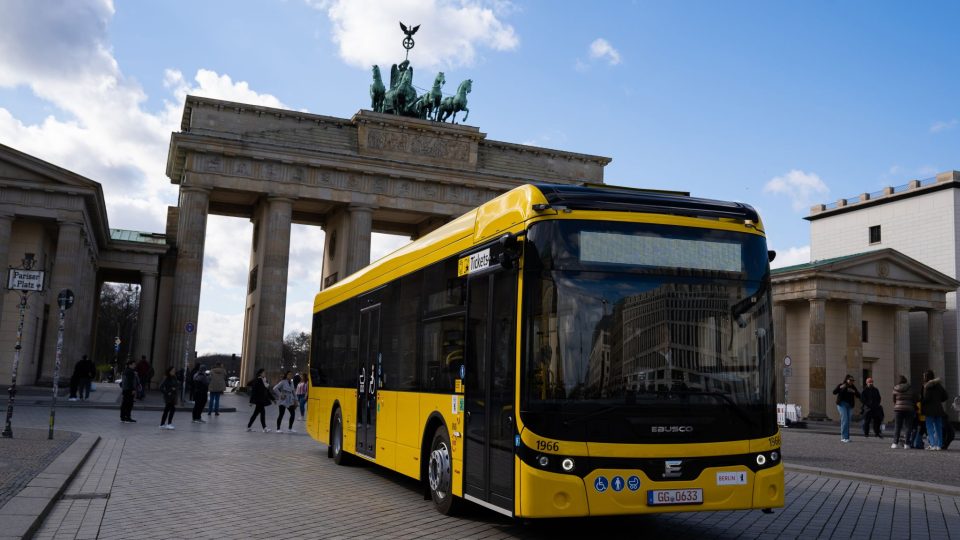Daimler Buses wants to double its profit margin by 2030 (and announces e-mobility roadmap)
In 2023, the company generated an adjusted return on sales of 4.7, which constitutes a significant rise on the prior year (PY 0.4 percent). A positive market development and consistent implementation of efficiency measures made these results possible. Now Daimler Buses states it aims to "achieve an adjusted return on sales of nine percent by the end of the decade"

Daimler Buses sold some 26,200 units around the world in 2023 and is thus significantly up on the prior-year level at nine percent. The increase in unit sales “was mainly due to a recovery in the European coach market, which led to a significant increase in unit sales in Europe of 26 percent to around 8,000 units”, the company says.
In 2023, the company generated an adjusted return on sales of 4.7, which constitutes a significant rise on the prior year (PY 0.4 percent). A positive market development and consistent implementation of efficiency measures made these results possible.
Now Daimler Buses states it aims to “achieve an adjusted return on sales of nine percent by the end of the decade, assuming favorable market conditions. Daimler Buses plans to reach eight percent by as early as 2025. The plans are for the company to become more profitable even in a less than ideal market environment”.
The group today (18th March) announced a series of strategic targets. Beside the financial goals, the most interesting statements from the company, the bus division of Daimler Truck says that intercity e‑buses are going to be marketed as of the middle of the decade and electrified coaches by 2030. What is also worth mentioning, Daimler e-buses will be “increasingly share the e-drivetrain, components and technologies, wherever possible, with the electrically powered trucks of the Daimler Truck Group“.
We are firmly convinced that this is the ‘decade of the bus’. We intend to make the best possible use of the opportunities opening up and, from a position of strength, make our mark on the transformation with our products and services like no other.
Till Oberwörder, CEO Daimler Buses
Daimler Buses to expand the e-bus portfolio
The manufacturer states that: “Alongside consistent expansion of the e-portfolio, the company is planning to align its offering of services even more closely to changing customer needs. Furthermore, the manufacturer intends to drive forward the digitalization of products and processes to create further added value for customers and to boost efficiency within the company. Implementation of all measures will be closely coordinated and make a contribution to a holistic, customer-focused strategy”. This was announced by Till Oberwörder, CEO Daimler Buses, today at an event held by the manufacturer in Madrid.
In Till Oberwörder‘s words: “The transformation of our industry is in full swing and demand for environmentally friendly means of transport is increasing continuously. We can make the world more sustainable with locally CO2-neutral buses and thus make an important contribution to mitigating climate change. We are firmly convinced that this is the ‘decade of the bus’. We intend to make the best possible use of the opportunities opening up and, from a position of strength, make our mark on the transformation with our products and services like no other.”
The switch of buses to zero emission
Daimler Buses mentions a study by Organisation for Economic Co-operation and Development (OECD) assuming that “demand for public mobility by bus will increase by a total of around ten percent in Europe and Latin America between 2019, i.e. from the level prior to the Covid-19 pandemic, and 2030. Public local transportation with city buses is expected to be the strongest driver”
At least 90 percent of all new city bus purchases by a fleet operator must consist of locally CO2-neutral vehicles from 2030 onwards, in Europe. From 2030 onwards, plans are for the segment of intercity buses and coaches to emit 45 percent less CO2.
Electrically powered city buses have already been in series production since 2018; intercity e‑buses are to follow as of the middle of the decade and electrified coaches by 2030. Not many OEMs have so far released timing for the production. It’s worth mentioning MAN, that stated that its eCoach is set to debut as early as 2025.
What is also interesting, Daimler Buses plans that its e-buses will be “increasingly share the e-drivetrain, components and technologies, wherever possible, with the electrically powered trucks of the Daimler Truck Group”. Further information on the roadmap will be given at the end of 2024.
Daimler Buses puts e-mobilty services in the spotlight
Daimler Buses says it intends to further intensify the business of its wholly owned subsidiary Daimler Buses Solutions GmbH relating to e‑systems from a single source. Operators of electric fleets are increasingly requesting all-in packages. By joining forces with Daimler Buses and other partners, Daimler Buses Solutions GmbH is able to provide all necessary turnkey e-infrastructure for depots. “The company is currently working on more than 20 projects and has been serving customers throughout Europe since mid-2023″, the group sums up.
As recently as the beginning of the year, Daimler Buses Solutions GmbH reached an important milestone in a major project: the construction measures for 41 charging stations with a total of 122 charging points for the bus depot of an operator of public local transport began in The Hague. The subsidiary is also expanding its portfolio to include hydrogen infrastructure for needs that will grow in the future.
Furthermore, the experts from Daimler Buses intend to further develop the strengths in traditional services, both for electrically and conventionally powered vehicles. Such services include, for example, a dense network of workshops to ensure rapid repair of vehicles that have been involved in an accident or have broken down. For this, Daimler Buses continues to rely on service points of its own throughout Europe. The plans are to increase the availability of replacement parts even further with the help of 3D-printing methods.
What about digital services?
Daimler Buses is planning to further drive forward digital services and, in doing so, build on state-of-the-art analysis tools and artificial intelligence. For example, the company intends to create “digital twins” of its buses, across all series, in order to provide the best possible support to customers in the aftersales process. This involves complete digitalization of all buses that will be produced in the future, making it possible to identify more quickly worn parts or, in the event of damage, replacement parts.
In addition, the plans are to deploy digital bus assembly throughout production, meaning that all components of the respective series are compiled beforehand digitally and in the correct sequence for assembly, and an analysis of the individual process steps is performed. This makes it possible to optimize the assembly process beforehand to keep later process modifications to a minimum, which contributes to an even more efficient production process.
In addition, Daimler Buses is planning to introduce over-the-air updates (OTA) for its portfolio. The first vehicles are scheduled to be equipped with this technology from the middle of the decade enabling the buses to be updated to the most recent software version – quickly, simply and without a visit to the workshop.






